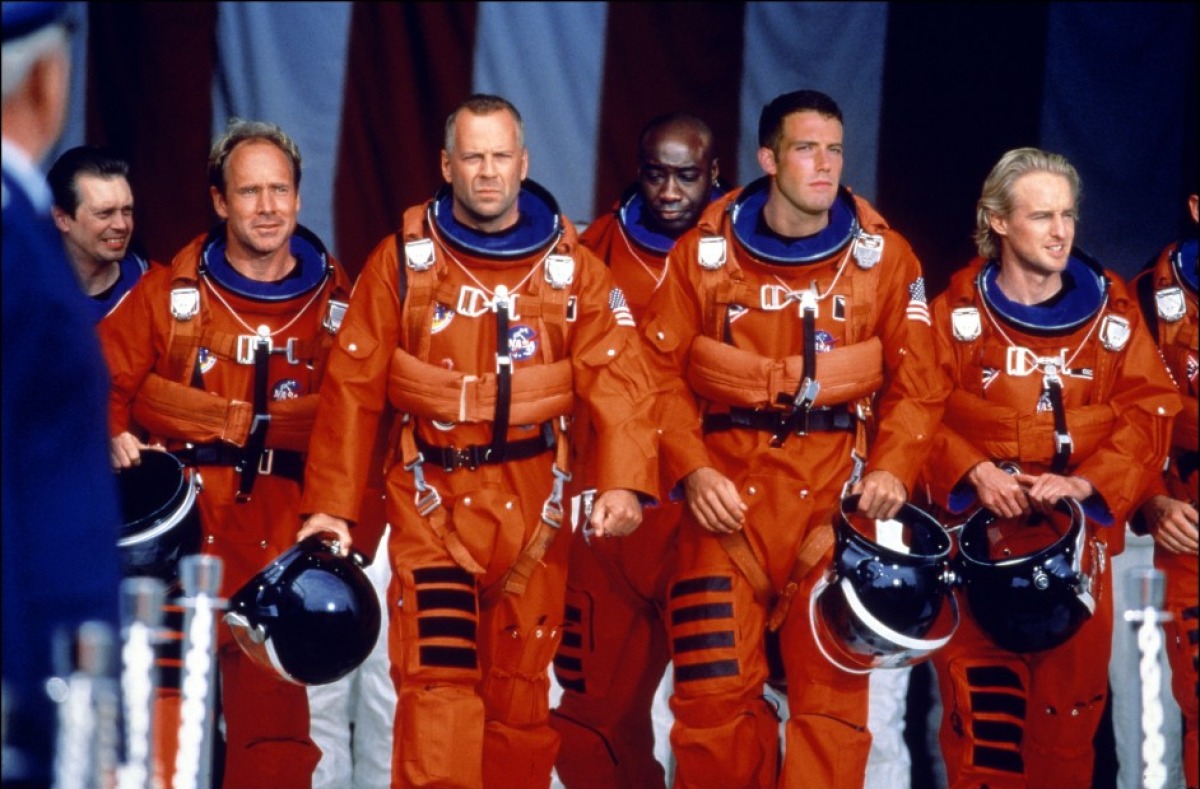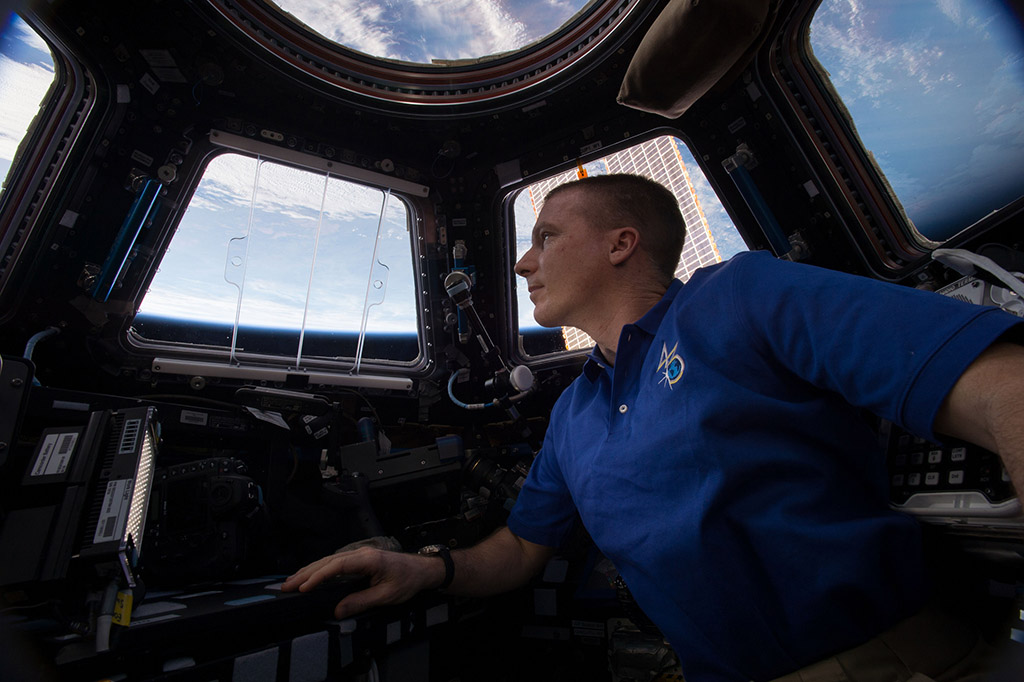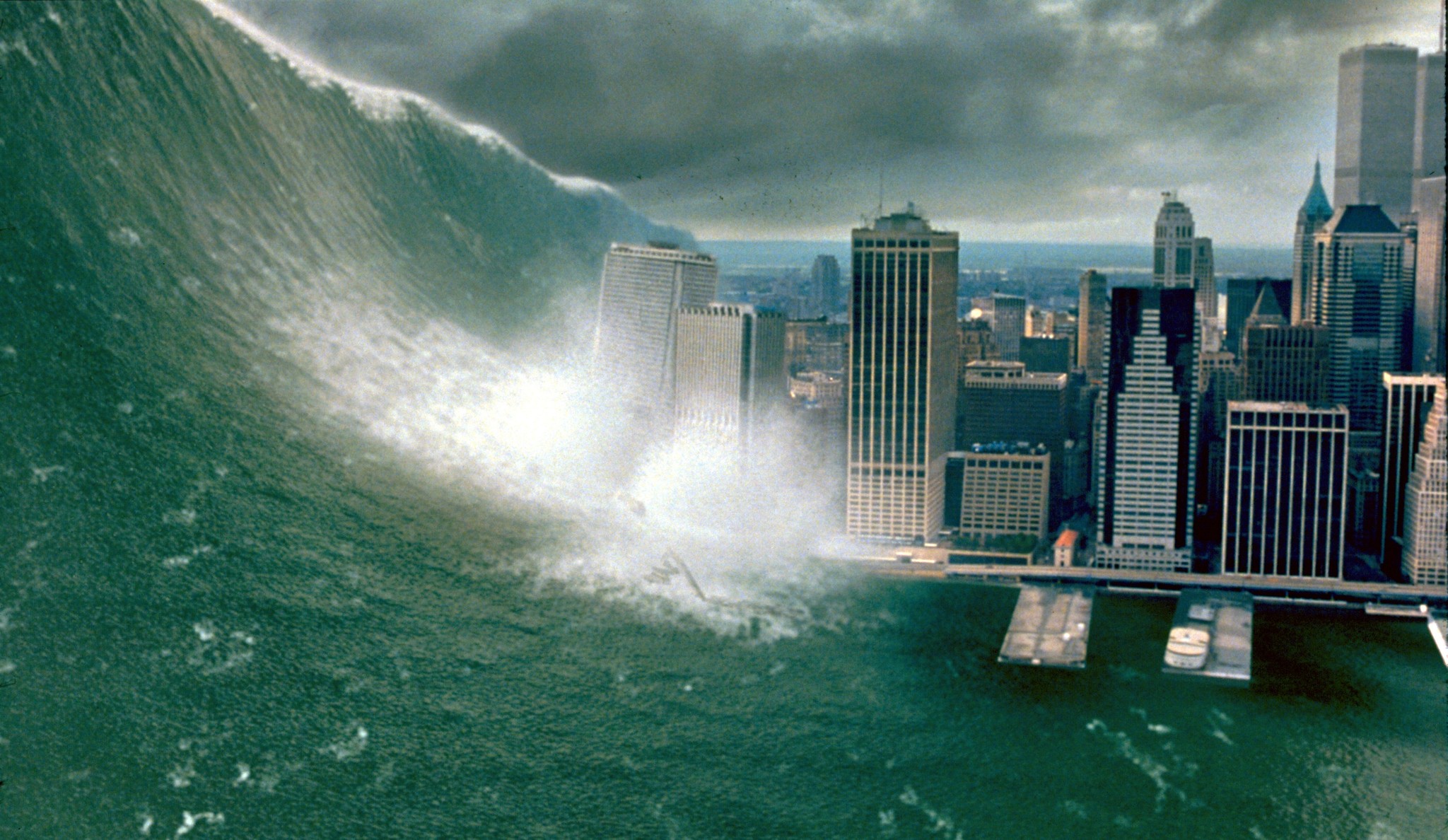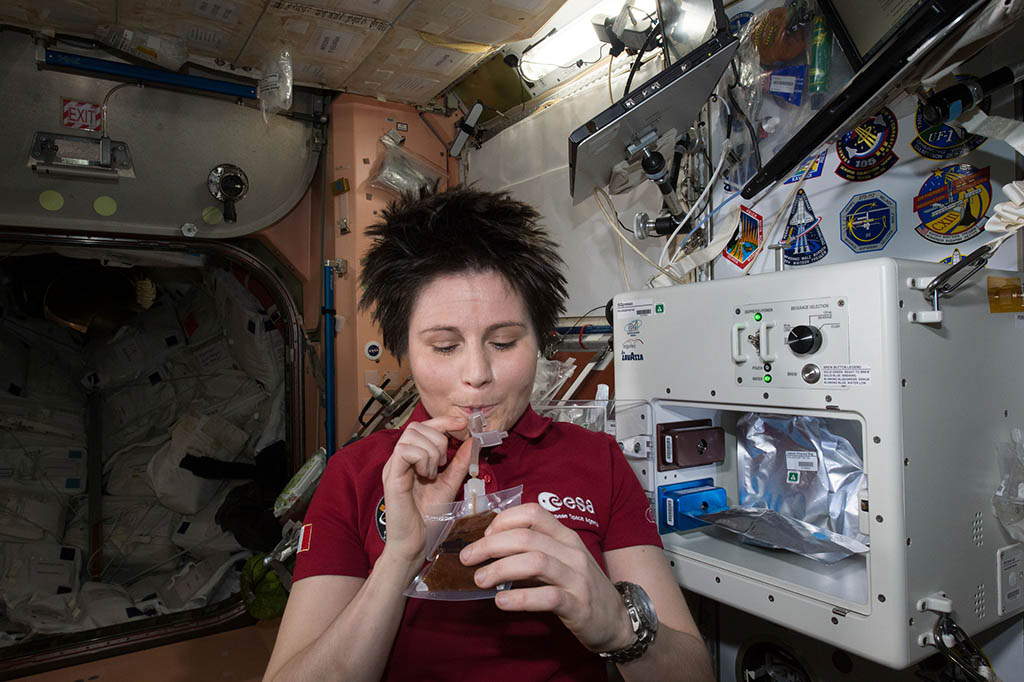On the evening of the 7th May 2015, while the UK was in a frenzy about the general election, the unmanned Russian spacecraft Progress M 59 was plummeting back towards Earth. A malfunction had sent the craft into an uncontrollable spin, preventing it from docking as planned with the International Space Station (ISS). This sounds like quite a dramatic scenario, one which had visitors to comment sections across the internet asking why the whole planet wasn't in a panic. Presumably they were imagining a scene from a 1998 science fiction disaster movie.

Armageddon (1998).
Credit: Touchstone Pictures
The media coverage of Progress M 59's descent was appropriately understated. In the UK at least, David Cameron's return to Westminster was seemingly a greater threat to the survival of mankind than the out-of-control spacecraft returning to Earth. Small debris and meteors hit the Earth more often than you might expect, and spacecraft make controlled landings on a regular basis after trips to the ISS. Two thirds of the Earth's surface is covered by water, and only 3% of that land is heavily populated, so even an out-of-control spacecraft is unlikely to be a risk to Earth's population. As spacecraft reach the densest part of the Earth's atmosphere, they are subject to forces of friction that are likely to generate high temperatures and break the spacecraft apart. However, it's impossible to predict how an out-of-control spacecraft might break up on re-entry, and I was curious to know what exactly happened to the Progress M 59, why it malfunctioned and where it ended up.
Following the retirement of the Space Shuttle programme in 2011, NASA has been relying on Russian Soyuz rockets to supply the ISS. On board the Progress capsule were more than 3 tonnes of food, water, fuel and other supplies. The Progress M 59's launch from the top of a Soyuz 2.1a rocket appeared to go smoothly, but flight controllers later reported the spacecraft may have failed to pressurise its propulsion system. The cause of this is still unknown, but it would mean Progress would be unable to dock with the ISS. Soon after reaching orbit, the craft went into an uncontrolled spin and it became apparent that the Progress wouldn't be completing its mission.

Here's NASA astronaut Terry Virts of Expedition 43 on the International Space Station checking the remote control Canadarm2 on 26th April, 2015. The Canadarm 2 is used to grapple arriving spacecraft and moving them to their docking ports.
Credit: NASA
Progress M 59 returned to Earth under the pull of gravity, The Russian Space Agency reporting that the craft 'ceased to exist' over the Pacific on the evening of 7th May. The final time of re-entry was approximately 9.20pm CDT (02:20 UTC). Visual reports on the internet of a descending object helped to track the out-of-control spacecraft. A disintegrating spacecraft might look like a meteor, leaving a fiery streak across the sky. It may even be visible in daytime. However, man made objects appear considerably slower on re-entry than meteors. The 1998 disaster film 'Deep Impact' comes to mind, where the approaching meteor is seen approaching more slowly than would be realistic, probably for dramatic effect.
The spacecraft may have be seen breaking up as it entered the atmosphere, creating bursts of light trailing away from the main body of the craft. Such disintegration occurs when the craft reaches the densest part of the atmosphere at around 70-75 miles (112-120km) high. Gravity alone would cause the craft to accelerate uncontrollably and fall dangerously fast. However, the atmosphere contains air particles that rub against the craft, causing friction. This causes the craft to experience air resistance that slows it down to a safer speed. However, the friction also causes high temperatures of around 1,650 degrees celsius.
The motion of vehicle, and the placement and fullness of fuel tanks (that may or may not explode) can affect the way that a spacecraft breaks up on re-entry. It's not known whether any parts of the Progress survived the fall to Earth, but if they did, the fragments probably landed in the Pacific Ocean.
Under normal circumstances, the Progress would've made a controlled descent to Earth after delivering its cargo to the ISS. After undocking from the orbital laboratory of the ISS, a command would be sent telling the Progress to re-enter the atmosphere and disintegrate over the South Pacific area. Any surviving debris would be unlikely to pose a threat to populated areas.
The dramatisation of space debris falling to Earth with disastrous consequences is common is science fiction books and films. However, such catastrophic events as the meteor strikes in 'Deep Impact' (1998) and 'Armageddon' (1998) are extremely unlikely events. Cinematic meteors make impact without fail near heavily populated American cities. However, 'Deep Impact' has had praise for its portrayal of the meteor impact, with critics noting how the planet-threatening tsunami would be the most likely scenario. Small debris falls to Earth quite often and rarely poses a risk to life on Earth as it usually disintegrates upon entering Earth's atmosphere.

Deep Impact (1998).
Credit: Dreamworks Pictures
Manned spacecraft are well-designed to ensure they're capable of surviving re-entry. A blunt-body design can help the spacecraft avoid the effects of friction in the atmosphere. The blunt-shaped front surface of the vehicle creates a shock wave that precedes the spacecraft, keeping the heat at a distance from the craft. Spacecraft also have heat resistant surfaces. Discovery Channel's video 'Coming Home From Space' gives an insight into how the now-retired space shuttle re-entry procedure allowed them to return safely to Earth.
The failed mission is estimated to cost the Russian Space Agency 5 billion roubles (£62 million). The Progress was carrying vital supplies to sustain the crew of six currently on the ISS. Though expensive and potentially disruptive to research on the space station, the crew are not under any immediate risk due to the failure of the mission. On board the ISS are 2.5 tonnes of food, water, fuel and other supplies, and Progress 60 is planned to launch in early July to deliver supplies to the ISS.
For one reason in particular, I don't think the ISS crew will be too heart broken over the delay in supplies. It seems they received the ultimate in supplies from the NASA contracted (and spectacularly named) SpaceX Cargo Dragon in April. That delivery included a real coffee machine, named the ISSpresso.

ESA (European Space Agency) Astronaut Samantha Cristoforetti enjoys her first drink from the new ISSpresso machine. The espresso device allows crews to make tea, coffee, broth or other hot beverages.
I've got a particular sensitivity to instant coffee - it makes me feel horribly nauseous - but I love the taste of coffee. Earlier this week, I got my act together to buy a cafetiere and some ground coffee, so on a small scale, I can comprehend the joy the ISS crew members must've felt when the ISSpresso made its arrival.
Credit: NASA
There's more - In addition to providing a psychological boost to crew members, the ISSpresso is expected to contribute to the study of fluid dynamics in microgravity. You don't believe me?
References & Further Reading
- Deep Impact, Dreamworks Pictures (1998).
- Armageddon, Touchstone Pictures (1998).
Listing Image: NASA
